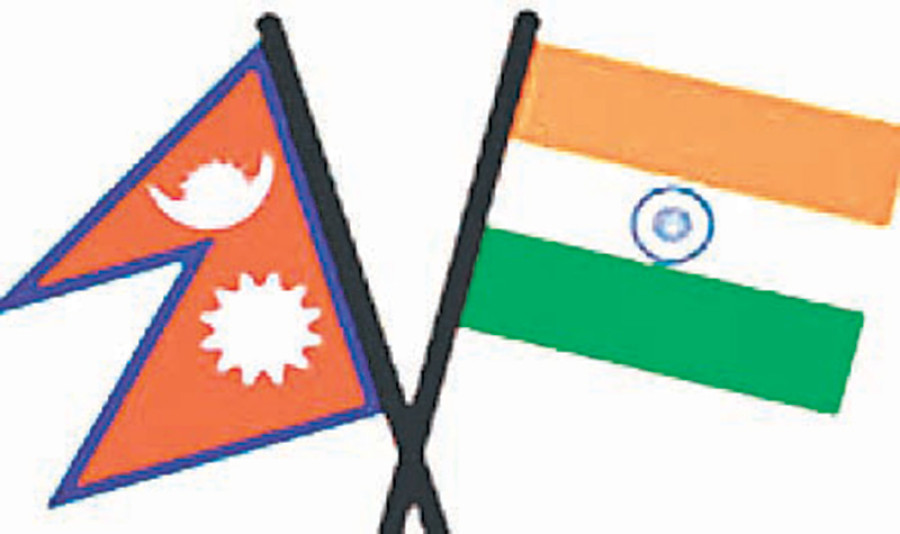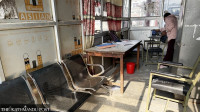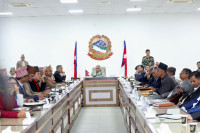National
Nepali team visits India to study inland waterways
A Nepali technical team reached the Indian city of Varanasi on Sunday on their way to Kolkata to study the construction of infrastructure for inland waterways in India and explore ways to develop waterways up to Nepal border.
Suresh Raj Neupane
A Nepali technical team reached the Indian city of Varanasi on Sunday on their way to Kolkata to study the construction of infrastructure for inland waterways in India and explore ways to develop waterways up to Nepal border.
During Prime Minister KP Sharma Oli’s state visit to India in April, the two countries had agreed to develop inland waterways from Indian ports to Nepali border. The first meeting in this respect has already convened in Kathmandu where it was agreed that a Nepali technical team would visit India to conduct a study of infrastructure of Indian waterways.
The Nepali team led by Joint Secretary at Water and Energy Commission Madav Belbase will conduct field visits of various Indian inland waterways infrastructure and how Nepal can benefit from them, said Nepali officials in New Delhi. The Nepali team will hold discussions with its Indian counterpart afterwards.
India is soon launching inland waterways in Uttar Pradesh and Bihar and expressed its readiness to extend that up to the Nepal border via Narayani River. India has already started building infrastructure to develop inland waterways from Kolkata to Varanasi via Ganga River. The government of India and World Bank are investing over INR 54 billion for this section of the project, of which some sections are already nearing completion.
Under the project, India is building three multi-modal terminal stations in Varanasi, Shaibgunj of Bihar and Haldia of Kolkata. The terminal in Varanasi is on track for completion in November.
Officials said the waterways will be instrumental to import and export of big consignment including raw materials for industry.
Once completed, Nepal-bound cargos from third countries can be transported from Kolkata to Varanasi that can be then brought in to Birgunj and Bhairahawa via rail and roads. The completion of terminal building in Kalughat and Shaibgunj in Bihar will also pave the way for the inland waterways between Nepal and India, the officials explained.
Once terminal in Kalughat near Patna comes into operation, Nepal can bring cargo up to Narayai River, while the terminal at Shaibgunj will pave the way for cargo movements through Koshi-Ganga waterways.
Several alternatives are under discussion between Nepal and India on the modality of the waterways, according to the officials. The Indian side has proposed that Nepal can export and import goods using big vessels from Kolkata to Kalughat in Bihar and park the goods there and transport them to Nepal border on smaller ships. Alternatively, Nepal can export or import goods by using the 180km Kalught-Raxual road. The Indian side has also proposed transporting goods on big vessels through the Kolkata-Shaibgunj waterway and ferry them using small ships up to the Nepal border. Besides, Nepal can bring in goods by road using the 150km Shaibgunj-Manihari-Birgunj corridor. India has also proposed the use of cross-border railway lines which are under construction at various border points.
A multi-modal terminal that India is building in Haldiya, Kolkota under the inland waterways project will handle 2.18 tonnes of cargo annually. It is slated to be completed in December 2019.
The Nepali team will also discuss this matter and explore how Nepal can use it, officials said. Nepal and India need to formulate and mutually agree upon the requisite procedures and modalities for including inland waterways as an additional means of transport in the Protocol to the Treaty of Transit between the two neighbours.




 17.12°C Kathmandu
17.12°C Kathmandu















